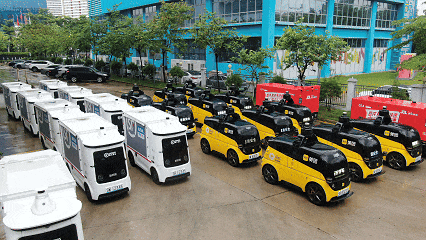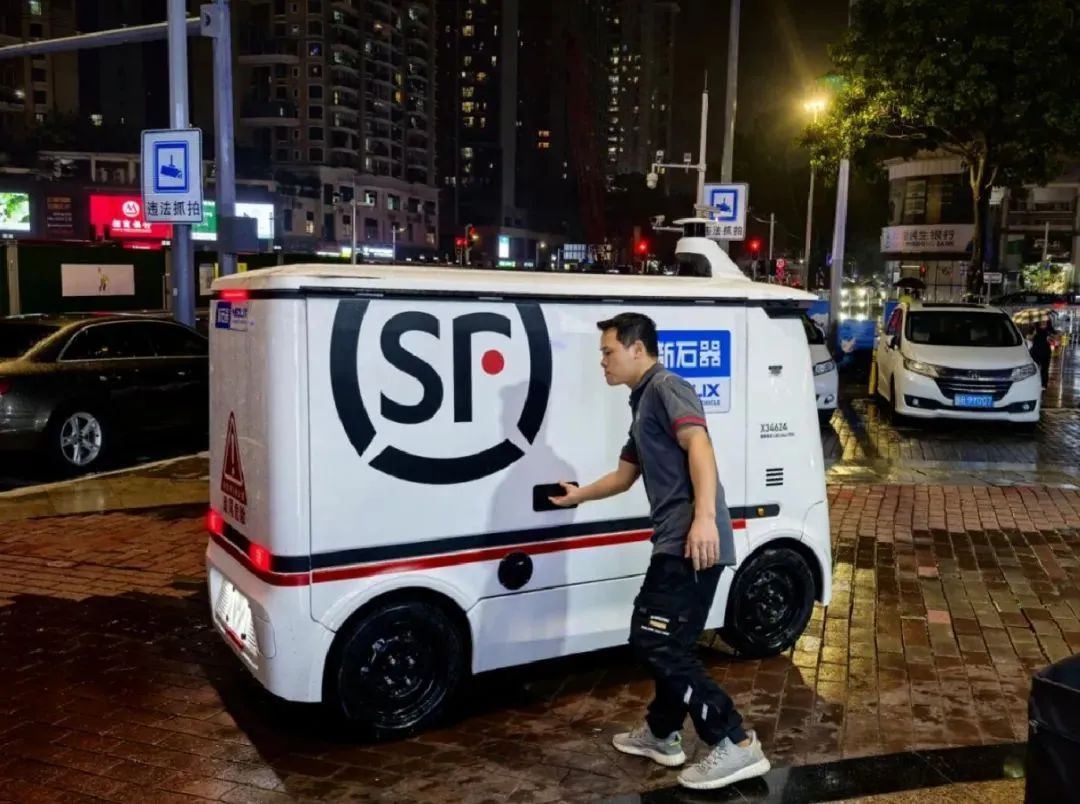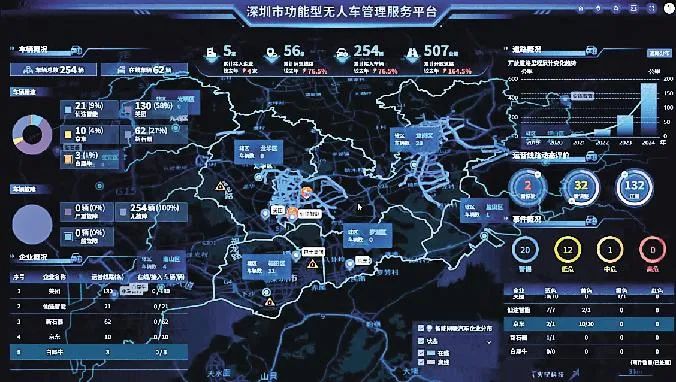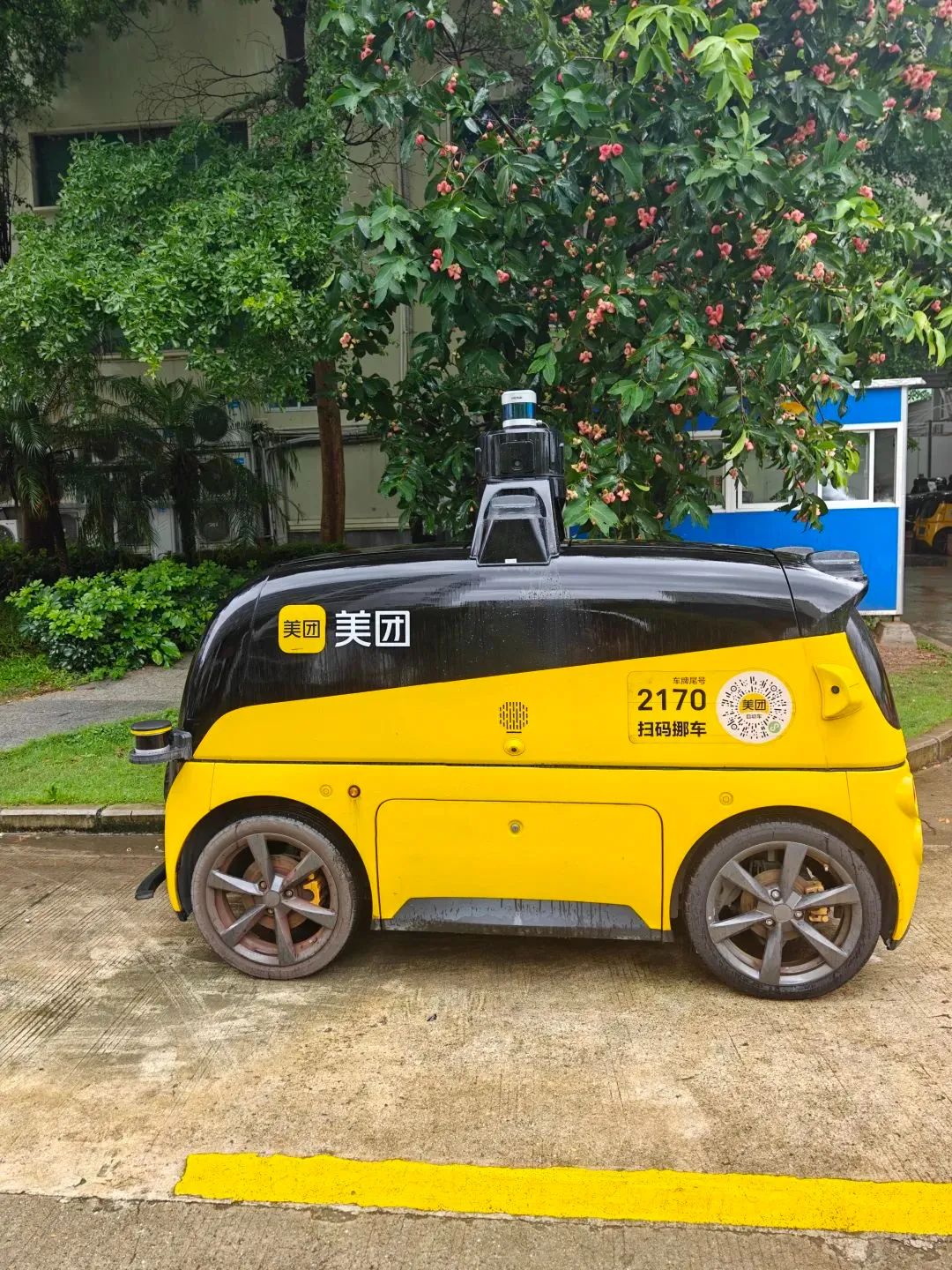
A fleet of unmanned vehicles prepares to hit the road at a logistics park in Shenzhen. Photos from Shenzhen Economic Daily
Shenzhen has built the country's first citywide unmanned delivery network. So far, 10 cross-district unmanned-vehicle routes have been launched across the city, according to the Shenzhen Intelligent Connected Transportation Association.
The routes cover a total distance of over 30 kilometers. Seven connect Longgang and Longhua districts, one links Pingshan and Longgang districts, another connects Longhua and Bao'an districts, and the final one runs between Longhua and Guangming districts.
In total, 29 municipal roads are connected by these routes, enabling deliveries in as little as 30 minutes within the covered areas. In the future, residents will be able to track the progress of unmanned vehicles via mobile apps.

An SF staffer prepares an unmanned vehicle for a delivery task in Shenzhen.
Zhang Hao, chief of courier and logistics company SF Holding's Shenzhen-Dongguan operations area, said the company has deployed 80 unmanned vehicles in Shenzhen. Together, those vehicles are capable of performing tasks that would require 35 human workers and 35 traditional shuttle vehicles.
"During off-peak periods, these vehicles can handle an average of 72,000 parcels per day, while during peak times, this number surges to 80,000 parcels. The daily delivery efficiency has improved by over 20%, and during peak periods, the increase can reach as high as 30%," he said.

Shenzhen launched China’s first service center for unmanned vehicle management in June.
According to the Shenzhen Municipal Transport Bureau, there are more than 300 unmanned vehicles in operation for logistics across the city. The service now covers over 100 communities and business districts, with daily delivery volume exceeding 100,000 orders.
Chinese tech companies are ramping up the adoption of drones and driverless delivery vehicles for logistics and delivery activities as part of a broader push to boost logistics efficiency, reduce logistics costs, and improve the user experience in a fiercely competitive market.
Industry experts say that compared with traditional delivery practices, unmanned deliveries feature lower costs, greater carrying capacity, and imporved safety records. Simultaneously, they also provide a viable alternative to address challenges like rising labor costs and a shortage of couriers.

A Meituan unmanned delivery vehicle stands ready for service in Shenzhen.
Experts state that there is a surging demand for grocery delivery services in China. According to a report from market consultancy iResearch, Chinese consumers are increasingly embracing on-demand shopping and purchasing, with fruits, vegetables, dairy products, meat, and eggs among the most commonly purchased goods.
In addition to satisfying consumer demand for instant deliveries, the adoption of autonomous delivery vehicles could potentially free couriers from parcel delivery tasks, allowing them to spend more time on customer service and vehicle maintenance, experts note.






